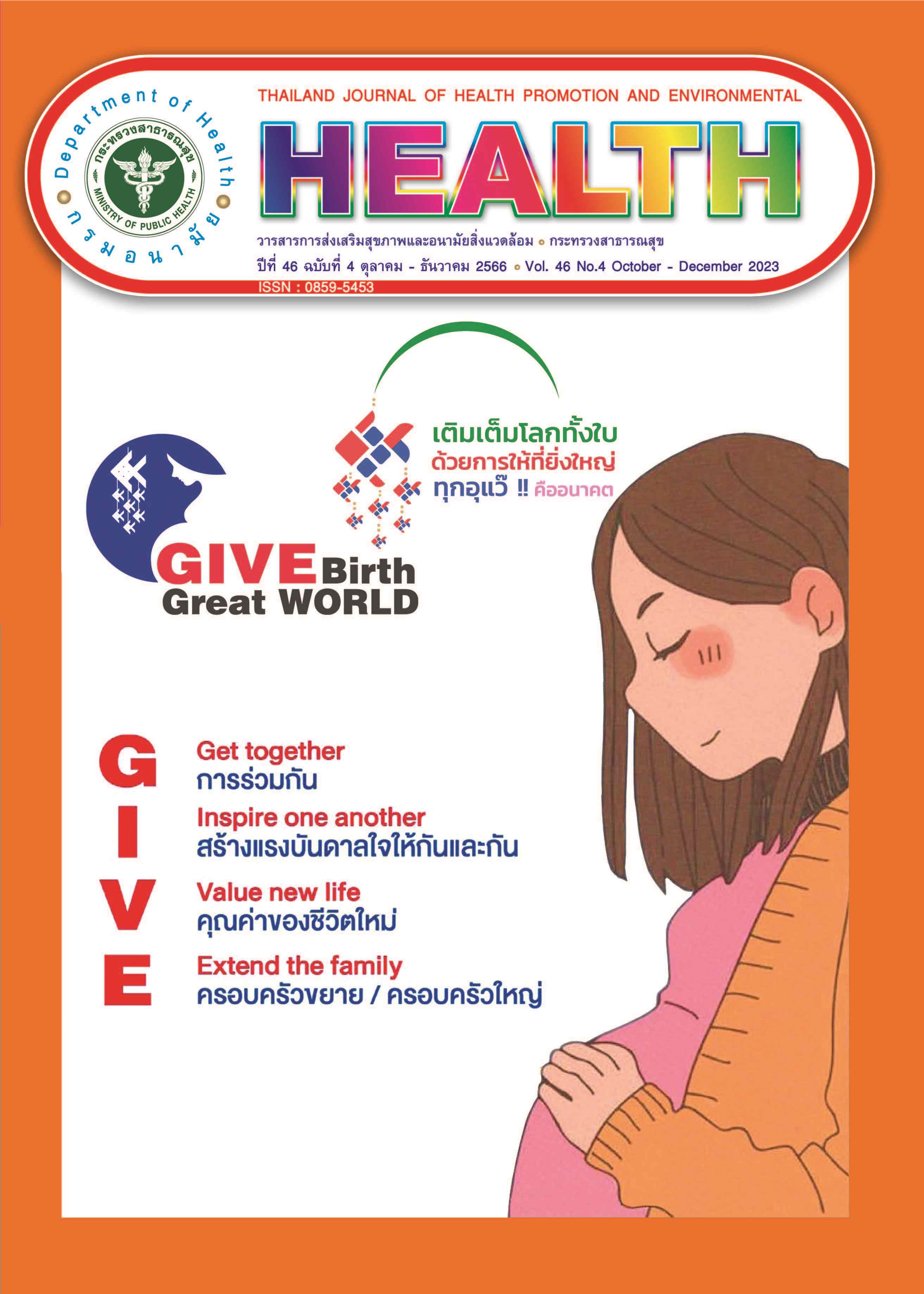The effect of exercise program for good happiness in the workplace by engaging personnel in health promotion department
Keywords:
Happinometer, Happy workplace, Body composition Analyzer, Bioelectrical Impedance Analysis (BIA)Abstract
Health promotion Division was aware of the health status of personnel in multidimensional aspects including physical and mental health e.g., happiness at work, good nutritional status, and regular exercise. Possession of optimal health among personnel can improve brain health, a good immune system, reduce risk of diseases and improve ability to do daily activities. The division’s goal was providing a healthy environment and mutual society that created happiness and good physical health. Objective: To compare the efficacy of exercise program and nutrition course on physical and mental health of the personnel of the health promotion division by using the Body Composition Analyzer and happinometer questionnaire. Methods of study: The program for promoting good health composed of exercise programs 3 times per week and nutritional plan guidance. All exercise equipment necessary for designed exercise program were provided by the division. Happinometer, a questionnaire for happiness survey was used to evaluate viability satisfaction status before and after participating in health education activities. Participants’ body weight, body mass indexes (BMI), muscle mass and % body fat were measured and calculated by bioelectrical Impedance Analysis (BIA) at the beginning and the end of the project. Results: After complete the programs for good physical and mental healths, Most health promotion personnel weigh between 46-92 kilograms, which is overweight. When the body mass index (BMI) was calculated, it was found that the personnel had a body mass index (BMI) within the criteria of being overweight (Over weight, BMI = 23.0-24.9), 8.86% (3/34) and obese level 1 (Obesity grade 1, BMI = 25.0-29.9), 29.4% (10/34) and Obesity grade 2 (Obesity grade 2, BMI>30), 11.8% (4/34), including a total of 17 people, 50.0% (17/34), but after participate in the project, most of them were able to lose weight, which resulted in a change in their BMI criteria for overweight and obesity. The improvement was changing from being overweight (BMI = 23.0-24.9) to the normal weight (BMI = 18.5-22.9) for 1 person, 5.9% (1/17) and from being obese level 1 (BMI = 25.0-29.9) to overweight for 2 people, 11.8% (2/17). 82.4% (14/17) had a decrease in body weight, but the BMI criteria remains within the same level. The maximum weight loss was 5.6 kilograms, 6.2% of the body weight reduction. Most personnel were able to lose weight from 0.1-5.6 kilogram 0.2-6.7%, 2.1±1.8 (mean±SD). Males had larger degree of weight loss. The percentage of body fat before entering the project was between 4.4-48.7%, 27.8±9.25 (mean±SD), but after entering the project, it was found that Fat percentage was between 3.5-48.4%, 27.1±8.94 (mean±SD) with a decrease, and muscle mass before entering the project was between 16.2-37.4 kilograms 27.5±7.11 (mean±SD). After entering the project, it was between 16.8-42.7 kilograms 27.6±7.13 (mean±SD), with an increase in muscle mass. All 3 parts resulted in a clear increase in happiness scores for physical health. The program composing exercise 3 days a week and diet plan resulted in reduction of the weight of health promotion division personnel and increase 3 points of the Happinometer survey score in physical happiness aspect. Summary: The program for good health resulted in reduction of the weight and percentage of body fat also increased muscle mass of health promotion personnel to and makes happy body surveys of the Happinometer tool
Downloads
Published
Issue
Section
License
Copyright (c) 2023 Thailand journal of Health Promotion and Environmental Health

This work is licensed under a Creative Commons Attribution-NonCommercial-NoDerivatives 4.0 International License.

